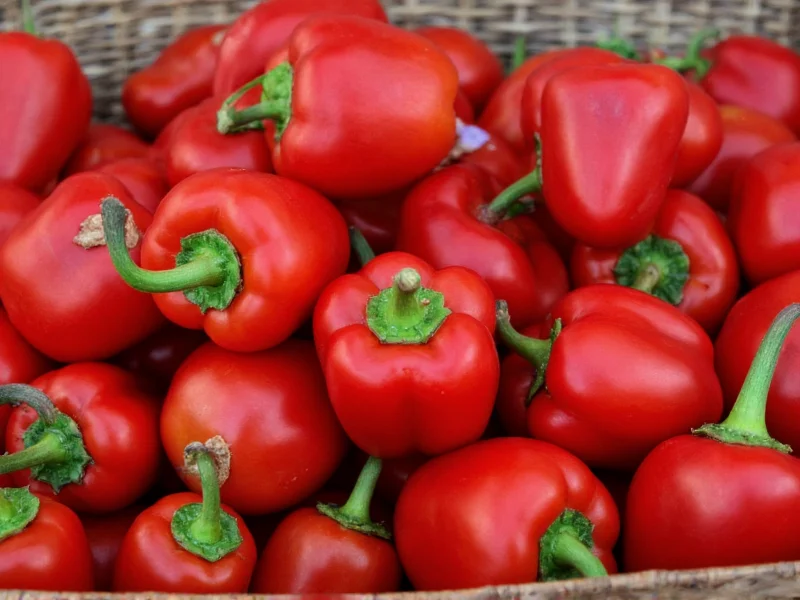Many home gardeners and cooking enthusiasts encounter confusion when searching for specialty peppers. The \"telecherry pepper\" query represents a classic case of linguistic misdirection in food terminology. This article clarifies the likely intended varieties, provides botanical accuracy, and delivers practical culinary information for pepper enthusiasts seeking authentic details.
Understanding the Telecherry Pepper Confusion
When examining search patterns for \"telecherry pepper\", three primary possibilities emerge from horticultural databases and culinary references:
- Tequila Cherry Pepper - A specific hybrid cultivar developed for its unique flavor profile
- Tepin Cherry Pepper - Referring to the tiny, intensely hot chiltepin (Capsicum annuum var. glabriusculum), sometimes called \"bird's eye cherry\"
- Thai Cherry Pepper - A common mishearing of \"Thai hot cherry\" varieties
Botanical records confirm no officially recognized Capsicum species or cultivar named \"telecherry\" exists in the USDA GRIN Taxonomy database or International Capsicum Research Center registries. This linguistic confusion typically stems from phonetic similarities between \"tequila\", \"tepin\", and regional pronunciation variations.
Tequila Cherry Pepper: The Most Likely Candidate
When gardeners search for \"telecherry pepper\", they're most frequently seeking information about the tequila cherry pepper - a distinctive cultivar developed through selective breeding. This medium-heat chili (5,000-10,000 Scoville Heat Units) offers a complex flavor profile that distinguishes it from common supermarket peppers.
Originating from crossbreeding experiments in New Mexico's pepper research facilities, the tequila cherry pepper features:
- Distinctive cherry-shaped fruits (1-1.5 inches in diameter)
- Color transition from pale green to vibrant red when mature
- Thick, crisp walls ideal for stuffing and pickling
- Unique flavor combining citrus notes with traditional pepper sweetness
| Pepper Characteristic | Tequila Cherry | Standard Cherry Pepper | Tepin Pepper |
|---|---|---|---|
| Heat Level (SHU) | 5,000-10,000 | 500-2,500 | 50,000-100,000 |
| Mature Color | Bright red | Deep red | Red-orange |
| Plant Height | 24-30 inches | 18-24 inches | 12-18 inches |
| Days to Maturity | 70-80 | 65-75 | 90-100 |
| Common Culinary Uses | Salsas, pickling, stuffed peppers | Salads, antipasti, roasting | Hot sauces, spice blends |
Growing Tequila Cherry Peppers Successfully
Cultivating tequila cherry peppers requires attention to specific growing conditions that maximize their unique flavor profile. Unlike standard cherry peppers, this cultivar benefits from particular care techniques:
Soil Requirements: These peppers thrive in well-draining soil with pH between 6.0-6.8. Incorporate organic matter before planting to improve soil structure. Avoid nitrogen-heavy fertilizers which promote leaf growth at the expense of fruit development.
Watering Schedule: Maintain consistent moisture without waterlogging. Drip irrigation works best, delivering approximately 1-1.5 inches of water weekly. Reduce watering slightly when fruits begin ripening to concentrate flavors.
Climate Considerations: Tequila cherry peppers require 65-85°F daytime temperatures and benefit from moderate humidity. In cooler climates, grow in containers that can be moved indoors during temperature drops. These plants typically yield harvests 70-80 days after transplanting.
Culinary Applications and Flavor Pairings
The tequila cherry pepper's balanced heat and distinctive flavor profile make it exceptionally versatile in the kitchen. Unlike milder cherry peppers, its medium heat level provides noticeable warmth without overwhelming other ingredients.
Signature Uses:
- Pickling: The thick walls maintain crunchiness during the pickling process. Try a vinegar solution with garlic, oregano, and a touch of agave nectar to complement the pepper's natural sweetness.
- Salsas: Combine with roasted tomatoes, red onion, and cilantro for a vibrant table salsa. The tequila cherry's heat level provides more kick than standard cherry peppers while remaining approachable.
- Stuffing: Their perfect size and shape make them ideal for filling with cheese, grains, or meat mixtures. The heat permeates the filling during cooking.
Chef Elena Rodriguez of Santa Fe's renowned La Cucina del Sol notes: \"The tequila cherry pepper's unique citrus undertones pair exceptionally well with seafood. We often incorporate them into ceviche preparations where their moderate heat enhances rather than dominates the dish.\"
Substitution Guidance for Cooks
When tequila cherry peppers aren't available, understanding appropriate substitutes prevents recipe disappointment. The substitution depends on whether you prioritize heat level, flavor profile, or physical characteristics:
- For Heat and Flavor: A combination of 50% jalapeño and 50% sweet bell pepper approximates the tequila cherry's medium heat with sweet undertones
- For Physical Characteristics: Hungarian wax peppers offer similar size and wall thickness for stuffing applications
- For Pickling: Fresnos provide comparable heat and hold their shape well in vinegar-based solutions
Professional chefs recommend adjusting substitution ratios based on the specific recipe. For raw applications like salads, use milder substitutes; for cooked dishes where heat diminishes, slightly hotter alternatives may work better.
Storage and Preservation Techniques
Maximizing the shelf life of tequila cherry peppers requires proper handling techniques:
- Refrigeration: Store unwashed peppers in perforated plastic bags in the vegetable crisper. Properly stored, they maintain quality for 2-3 weeks.
- Freezing: For best results, roast peppers first to preserve flavor. Place on baking sheet, roast at 400°F until skins blister, then freeze individually before transferring to freezer bags.
- Drying: String peppers on twine through the stems and hang in a warm, dry location with good air circulation. The tequila cherry's thick walls require 2-3 weeks to fully dry.
- Preserving in Oil: After pickling, transfer peppers to sterilized jars and cover with olive oil for extended shelf life and enhanced flavor.











 浙公网安备
33010002000092号
浙公网安备
33010002000092号 浙B2-20120091-4
浙B2-20120091-4